Most candies, vintage or not, have never had many, if any, redeeming qualities due to high amounts of sugar, food coloring, and teeth-pulling textures. Candy, nonetheless, is a perennial favorite, and always will be popular. But there are some old-fashioned candies that we just bad ideas and they should never make a comeback.
Here are some vintage candies, and while some are still around, they are all better off retired. Plus, don’t miss 14 Discontinued Candies That Taste Like Childhood.
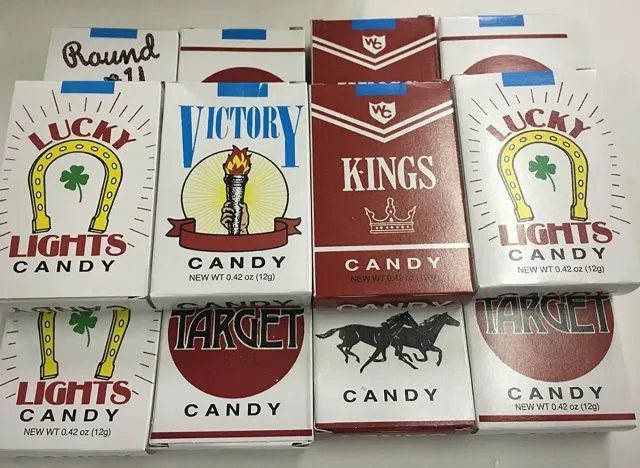

When “child-friendly” cigarettes first rolled out in the early 1930s, smoking was not widely known to be a health issue and kids and their puffing parents loved the novelty candy.
Different brands provided varying types of candy—most were chalky white sugar “cigarettes” with powdered sugar that would be puffed out when a kid smoked them and the tip was red so as to appear lit. Others were made of chocolate.
But the narrative changed in the 50s, when concerns about the perils of carcinogens and nicotine surfaced, along with hysteria that kids would evolve from “smoking” the candy cigarettes to the real deal. In fact, the 1964 Surgeon General’s report on smoking and health warned that candy cigarettes might encourage children to smoke, and most tobacco companies began to distance themselves from candy cigarettes.
North Dakota had even banned candy cigarettes in 1953, although that ban was repealed in 1967. And the United States considered national bans on candy cigarettes, both in 1970 and 1991, but neither passed, according to CandyFavorites.com.
Still, the marketing did change to reflect the concerns and controversy. In the 70s, the word “cigarette” disappeared from the candy packaging, and was replaced by “sticks.” A far cry from an ad that was once ran early on for a brand of candy cigarettes; it read “Just like daddy!”
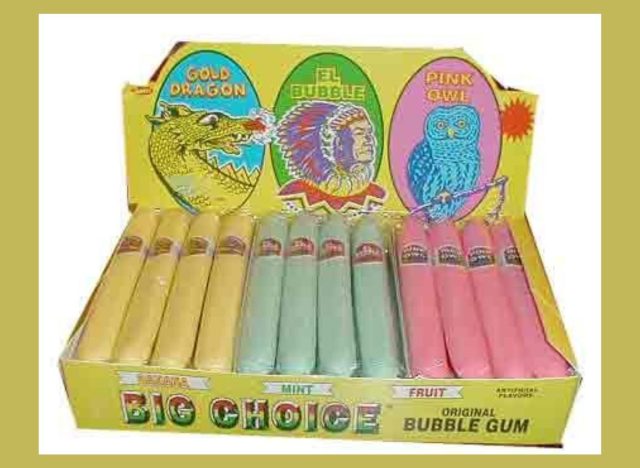

Close, but no cigar, these bubble gum cigar-shaped candies packaged in cigar boxes were born in the 1940s, intended for parents to hand out announcing the birth of their baby. There were several brands throughout the 40s and 50s. And they came in several colors, typically pink and blue, and other colors including green and yellow, too. Flavors like banana, fruit, apple, and mint were especially popular.
Like candy cigarettes, candy cigars were a smoking hit in the 40s and 50s until they received a lot of pushback from parents concerned that the cigars mimicked the real thing.
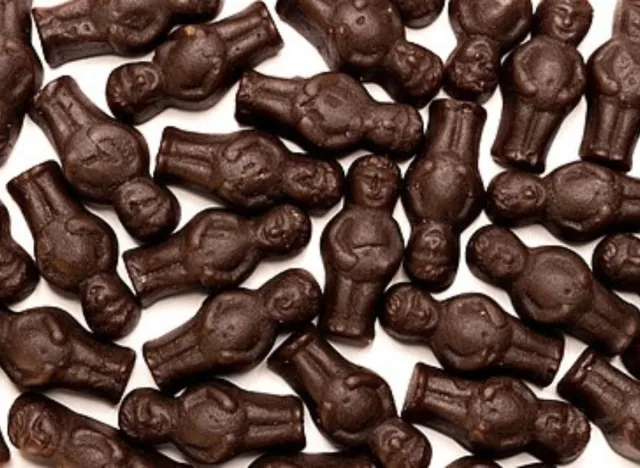

Similar to candy corns in texture, these swaddled baby-shaped, chocolate-flavored, chewy candies, are believed to have been born in the 1940s in New York City. By the 1970s, they were very popular, packaged in a bright orange box—and kids enjoyed biting the heads off which, apparently, was a compelling reason they loved to buy them.
By the late 80s early 90s, Chocolate Babies disappeared from candy shelves. Perhaps the candy was thought of as racist and not PC, and/or also made parents uncomfortable that the most popular way to eat these candies was to bite the heads off of the little babies.
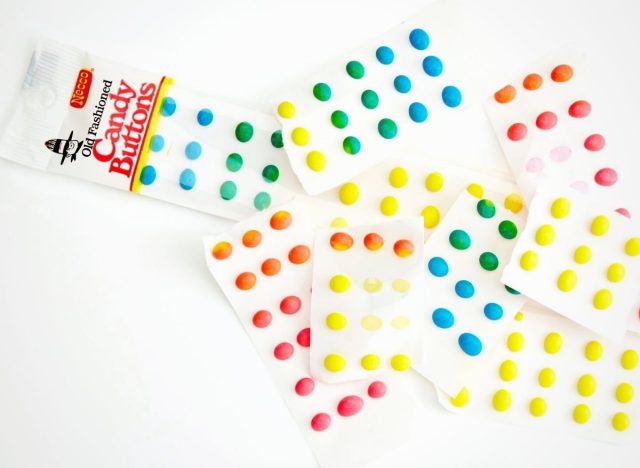

Dots of pink, blue, and yellow candies glued onto long strips of paper debuted in the 1930s by the Cumberland Valley Company. The little sugary dots that you wrestled off the paper with your teeth or fingers tasted as much like sugar as they did like the paper still stuck to the backs of them. They were colorful rows of pink, blue, yellow, and green.
READ RELATED: Cost of living crisis in the UK is seeing families going away on holiday STAYING IN to save money
Rumored reasons for the demise of the candy buttons include because of their similarities to a type of acid drug that was sold on strips of paper. They were, however, acquired by NECCO in 1980 and are still being made actually but not nearly as popular, for good reason, unless you’re a fan of paper stuck to pieces of sugar.
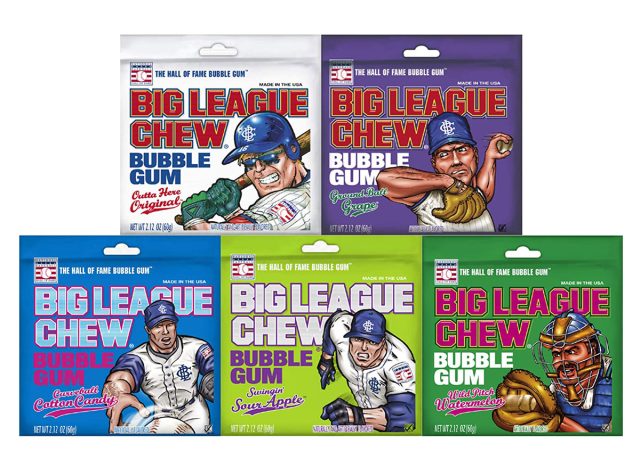

This bullpen bubble gum invention by Portland Mavericks lefthander Rob Nelson was dreamed up in an Oregon field of dreams. On a summer night in the 70s, he and teammate Jim Bouton chewed on the idea of shredded gum sold in a pouch to replace chewing tobacco.
Big League Chew was an alternative to highly addictive chewing tobacco, also known as dip, which was hugely popular with ballplayers for decades before it was known to cause oral cancers. Chewing tobacco had been a favorite of ballplayers dating back to the 1800s. Major League Baseball banned tobacco use from its minor-league system in 1993, including dip. And, in 2016, Major League Baseball banned the use of smokeless tobacco altogether, including chewing tobacco.
While Big League Chew is still a hit with players it certainly shouldn’t be the first pick for your kids. First of all, it’s almost pure sugar and the gum is designed to be eaten by the fistful. Second, it was made to mimic chewing tobacco which should definitely not come back into fashion.
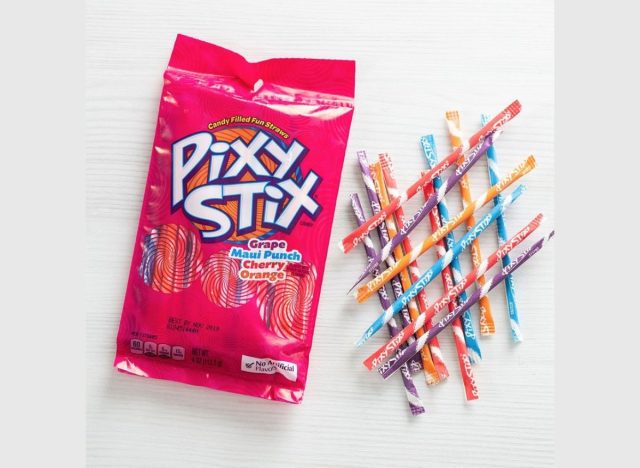

Pixy Stix are giant plastic striped straws and smaller paper straws packed with tart sugary powder that kids love to pour directly into their mouths or onto their hands. The sticks came in flavors like grape, cherry, orange, and Maui punch—but the taste doesn’t matter truly, it was all about the sugar rush for kids.
The candy was invented in St. Louis in 1952 by Sunline, Inc., but it actually got its start as a beverage in the 1930s as a powdered drink mix known as Frutola, meant to be mixed with water. But owner, John Fish Smith eventually caught on that kiddos weren’t interested in drinking the stuff, but instead were eating the powder directly from the package. So, he switched it up and decided to sell it as a candy, changing the name to Pixy Stix.Pixie Stix are still sold today under Nestle’s Wonka brand, but it’s best to avoid them!
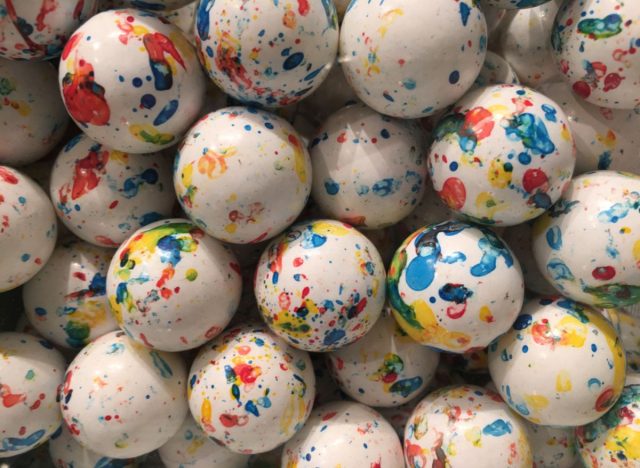

The success of the intimidating, daring jawbreaker candy apparently rolls to the Ferrara Pan Candy Company in Forest Park, Illinois, although there were similar candies even dating to the late 1800s, according to Candy Favorites. Jawbreakers were originally called gobstoppers and created in the United Kingdom, says Gumball. Like jawbreakers, gobstoppers typically had several layers, each layer dissolving to reveal a different color.
Dentists can probably vouch for the credibility of the name of this candy—it potentially breaks teeth if bitten, rather than sucked. It’s scary, too, to think of the choking hazards that a jawbreaker presents.
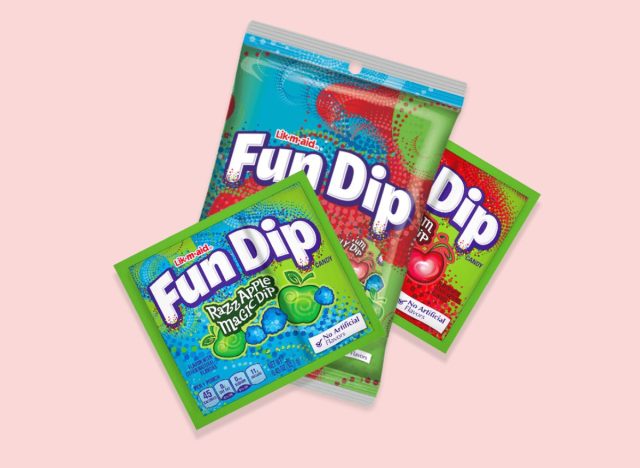

Quite literally, kids found fun in licking a white candy stick, then dipping it in a powdery, colorful, sugar dip, and again licking the coated candy stick. So this candy’s claim to fame is sugar on sugar.
According to Snack History, Fun Dip started out as Lik-M-Aid in 1952 but without the stick—kids would turn the pouch of sugary powder upside down and directly into their mouths, not unlike Pixy Stix. Fun Dip was later reimagined in 1973 by Sunline with the addition of the chalky white candy sticks called Lik.A.Stix. Fun Dip is still around because, you know, it says it’s fun. But terrible for you and your kids.
Source:










